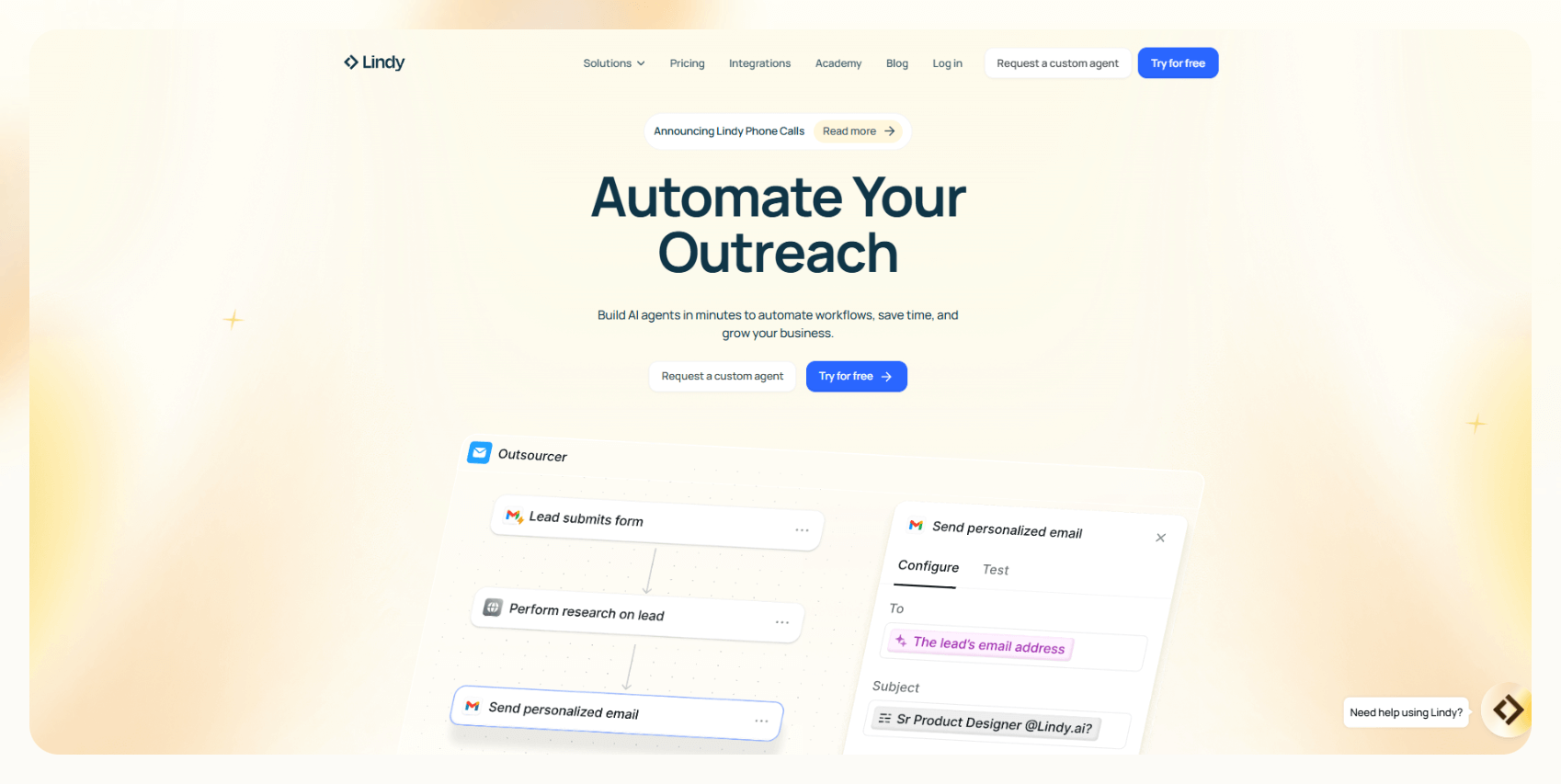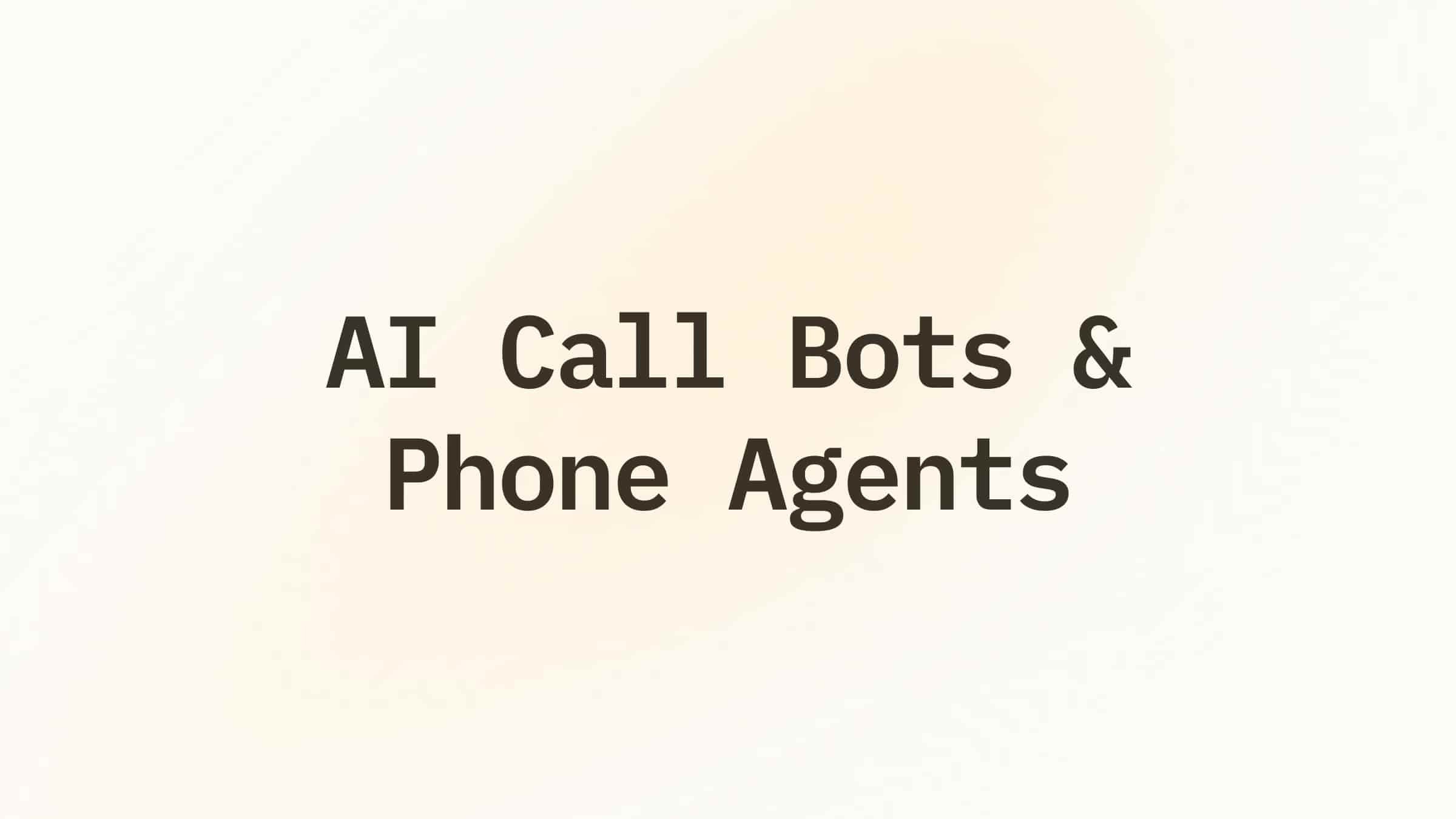Voiceflow offers a free version that lets you build your own voice and chat AI agents, and it’s a great platform to experiment on. Paid plans start at $60/month and allow you and another editor to build up to 20 agents.
The company also offers an enterprise plan, with customized pricing for larger businesses. Read on to learn more about:
- What Voiceflow is and its key features
- A comparison of Voiceflow’s pricing plans and an in-depth explanation of each
- Determining if Voiceflow is worth the cost
- A look at Voiceflow’s competitors
- Why Lindy.ai is the best Voiceflow alternative
Let’s now discuss what Voiceflow is and its main functionalities.
What is Voiceflow?

Voiceflow is a no-code platform that allows users to design, develop, and deploy AI conversational agents for voice and chat interfaces. It was initially created as a tool for building voice applications for Amazon Alexa.
The platform features a drag-and-drop editor, enabling you to create custom AI agents without requiring programming knowledge. Its flexibility allows for rapid agent building and modifications, making it easier to adapt AI assistants to your changing needs.
Your Voiceflow-made AI chatbots and voice assistants can engage with customers, automate workflows, and more. Embed these agents on multiple channels, like websites, mobile applications, and smart speakers.
Voiceflow’s versatility suits various industries, like customer service, education, and e-commerce. It’s also scalable, so your agents can meet the needs of a growing clientele.
Key features
- Easy no-code drag-and-drop interface: Instead of code, use Voiceflow’s simple drag-and-drop interface to map out chatbot and voice assistant workflows, no matter how simple or complex you want your agent to be.
- Collaboration and version control: Your team can work together in real time within Voiceflow’s collaborative workspace. Multiple users can edit, comment, and manage version histories, ensuring smooth workflows from the conceptual phase to deployment. This allows product teams, developers, and designers to iterate on projects without losing track of changes.
- Integrations and automations: Voiceflow’s hundreds of automations connect seamlessly with popular business CRMs like HubSpot and Zoho, databases, and payment systems like Stripe. This allows you to automate workflows, send any data your Voiceflow agent gathers to these platforms, or guide customers through processes.
- Testing, debugging, and optimization: The platform offers convenient built-in testing tools to ensure your agents run smoothly before deployment. It also lets you live-test conversations, catch errors, and refine your agents in a controlled environment. Voiceflow also provides analytics to track engagement and performance, allowing you to optimize responses and improve customer engagement with your agents.
Voiceflow pricing plans
Like many no-code AI agent-building platforms, Voiceflow gives you a free option to create a couple of agents and take them for a test drive — in total, you’ll get 4 different pricing tiers. Here they are:
Free
The Free plan is great for experimentation and testing the platform. You can build up to 2 agents, making it suitable for basic AI-agent projects.
- Pros: Get acquainted with the simple drag-and-drop interface and leverage 50 knowledge base sources per agent.
- Cons: You’ll have a limited number of AI tokens (which means limited processing and task execution).
- Ideal Users: This is perfect for anyone who wants to discover how Voiceflow works or who needs one or two very limited chatbots.
Pro ($60 monthly)
The Pro plan is designed for AI-agent builders needing more resources and flexibility. You can onboard a team of 2 editors and get an increased AI token limit (10M per month), providing you with more knowledge base data for each agent you build.
- Pros: Provides much more functionality and chat interactions, as you can create up to 20 agents with up to 5,000 knowledge bases per agent.
- Cons: If you’re looking for voice AI for inbound and outbound calls, you can only handle 5 concurrent calls, which may result in longer wait times for customers during peak hours.
- Ideal Users: An excellent choice for entrepreneurs, freelancers, and small businesses that need a boost to their customer service operations.
Team ($125/monthly)
If your organization is growing, and you need a scalable AI agent solution to match it, the Team Tier might be right up your alley. As the name suggests, it caters to teams, allowing you to onboard up to 5 editors and providing you with up to 30 million tokens for heaps of task execution.
- Pros: Build an unlimited number of agents with 5,000 knowledge bases per agent, 15 concurrent voice calls, and priority support if you encounter hiccups.
- Cons: SSO and role-based permissions are only available on the Enterprise plan, so security features may be limited at lower tiers.
- Ideal Users: If you’re growing and need a chatbot to grow with you or a medium-sized organization looking to accelerate your customer services with a chatbot or voice AI.
Enterprise (Contact sales on the site)
Voiceflow’s most advanced offering, the Enterprise plan, is tailored for large businesses requiring more involved AI capabilities, such as SSO, private cloud hosting, and a custom service-level agreement (SLA).
- Pros: Truly scalable, as it allows for unlimited agents and provides a high limit on knowledge base sources tailored to each enterprise's needs. It also provides 1-on-1 onboarding, so everyone knows how to use the platform.
- Cons: The pricing can get quite expensive, as other platforms offer enterprise level plans at less cost.
- Ideal Users: Perfect for large businesses, enterprises, and organizations with high AI usage and scalability needs.
Is Voiceflow worth the cost?
Determining whether Voiceflow is worth the investment depends on your precise AI needs. First, the platform is specifically designed to create AI agents for chatbots, voice functions, and workflow triggers.
So, if you’re looking to create chatbots or phone agents to handle customer service, shortlisting Voiceflow might be a great idea. The platform is reasonably priced for small and medium teams and provides enough tokens and knowledge base space to create amazing AI agents.
But, if you’re looking for an AI platform that can scrape the web for leads, cleanse and parse data and offer suggestions, or handle other complex data tasks, you’ll need to look into other options.
Security is another factor: The platform lacks advanced role-based permissions which may be a concern for teams needing strict access controls.
Voiceflow vs. competitors
Lindy

Lindy is a versatile AI automation platform for creating voice and other AI agents, which you’ll build with a simple no-code interface. These agents can streamline workflows, interact with customers, assist your sales team, and much more.
- Pros: You can create voice agents and chatbots from pre-built templates. Then you can customize the workflows in a visual interface and add related automations. For example, it can also handle meeting scheduling, lead generation and follow-up, customer support, and more.
- Cons: Configuring integrations with less popular third-party platforms could be difficult.
{{templates}}
Vapi
.avif)
Vapi AI is a voice automation platform that creates AI-powered phone agents to handle inbound and outbound calls.
- Pros: No-code interface for creating several voice agents that let you automate high volumes of calls, making it useful for customer service, sales, and appointment scheduling.
- Cons: Limited to creating voice agents only.
Rasa
.avif)
Rasa is an open-source AI platform that’s designed for enterprise needs. It enables developers to create sophisticated chatbots, agents, and other AI tools with some coding and technical knowledge.
- Pros: You’ll get all the flexibility of an open-sourced platform and enough scalability to meet the needs of any enterprise.
- Cons: Pricing starts at $35,000 per year, making it a considerable investment.$
{{cta}}
Lindy: Your versatile AI agent
Lindy is an AI automation platform that lets you create voice agents and chatbots similar to Voiceflow, alongside workflow automations that integrate with CRM and scheduling software, and more.
Build a whole army of Lindies that can share information, pool data, and complete complex tasks in a snap. Here's how Lindy works in action:
- AI assistants that never clocks out: Lindy delivers 24/7 voice and chatbot services, and if it detects a complex problem, it can schedule a meeting with a human agent as soon as they’re available.
- A cosmopolitan builder: Create a chatbot an ability to answer customer questions in over 30 languages, you’ll be able to serve a clientele in nearly every corner of the globe.
- Integrate with your CRM software: Automatically transfer all the info your chatbots glean from leads and customers directly to your CRM software, like HubSpot and Salesforce, reducing the need for annoying manual shuffling. Lindy helps organize CRM data by extracting structured information and maintaining it up to the standard you set.
- Affordable pricing for small businesses and enterprises: Compared to Voiceflow pricing, Lindy takes the cake — it’s lower-tier version is only $49/month and allows for up to 5,000 automations. Lindy offers enterprise pricing starting around $299/month, which depends on features, usage, and integrations.
See for yourself why Lindy is our favorite AI agent builder, and try the free version today.


















.jpg)
.png)
.png)


.png)
.png)